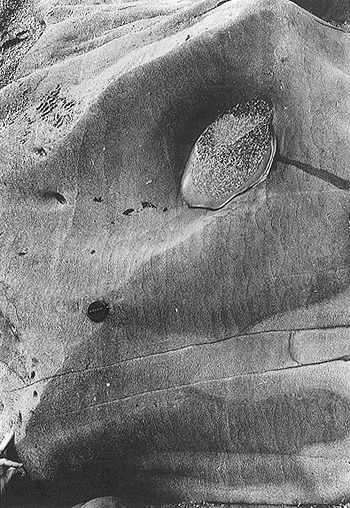
Dewatering structures: dish
Plate 113

Dewatering structures: dish
Plate 113
Plate 113 shows a detail of a vertical bed; to observe the structures in their natural position, rotate the page 90° counterclockwise.
In well-cemented sandstones (see also plate 112), dish structure looks like upcurled, partly intersecting dark lines. These lines represent enrichments of matrix components in the sand, made by selective deposition (laminae) or secondary concentration of fine particles entrained by ascending water (a sort of micro-sills). They formed semipermeable membranes that resisted water pressure but could not prevent its escape, being thus deformed and disrupted. The formation of dishes should be progressive, from bottom up, but this cannot be easily demonstrated.
Dish structures can be used as way-up indicators in tilted and overtunred beds as exemplified by this sandstone unit in the Franciscan Complex cropping out in a California beach.